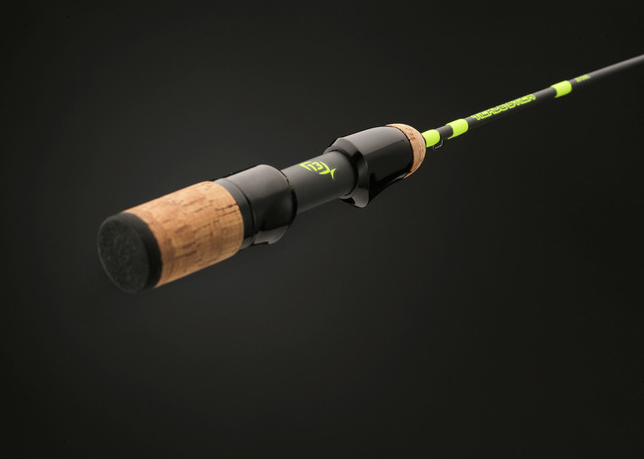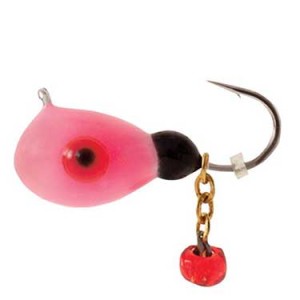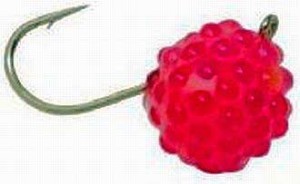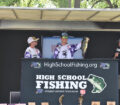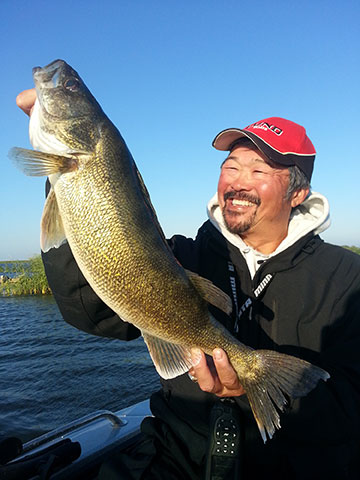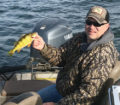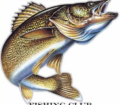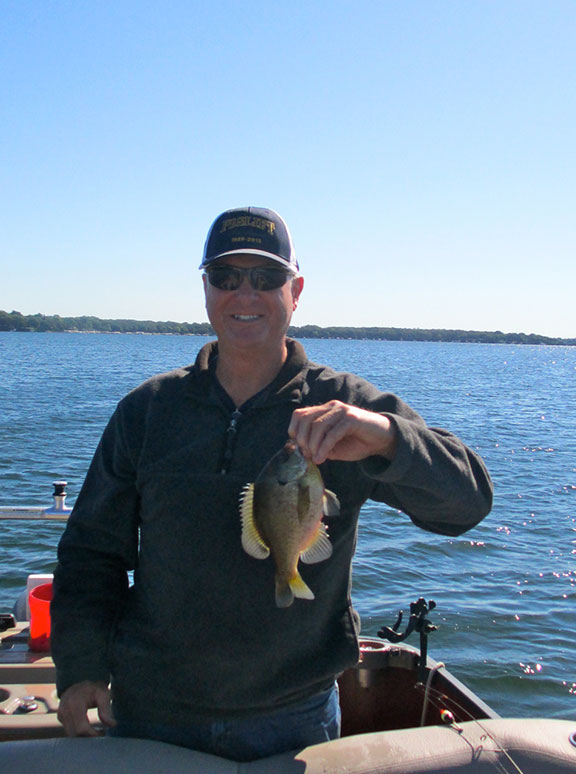By Steve Weisman
When you think jigging and ice fishing for panfish, the key has always been “think small.” The trouble is traditionally small has meant a jig that seemed to take forever to move its way through the water column to reach the fish.
It didn’t matter as much when the water was only 4-5 feet deep, but deeper than that and it was a real pain. Plus, being able to get a jigging cadence going was also difficult because the jig was so light.
Enter tungsten. Tungsten jigs have been the rage for perhaps the last three years or so. When it comes to ice fishing, I’ve used tungsten long enough to replace the lead jigs that I used to use. You get the best of two worlds: tiny jigs that are 30 percent heavier and 70 percent denser than lead jigs the same size.
So, the jig has a fast drop to get to the fish more quickly, yet its weight helps the angler develop a jigging cadence that can be either aggressive and hard or a subtle and tight jiggle. It is much easier to find the cadence that the fish want on that particular day. At the same time, the tiny tungsten jig shows up much better on electronics.
When it comes to new jig designs, I often turn to Dave Genz, because he is always pushing the envelope to find something new that will work. He tests them all extensively before they are available to us. One of the ones that I have used extensively and with good success the past two winters has been his Clam Drop jig in either the 14 or 16 hook size. What I like about this jig is that it hangs at about a 45-degree angle, which helps give me that really tight jiggle for bluegills.
Something special about this one is that the jig has a tiny swinging chain and attractor bead. It seems that the flash of the chain will sometimes entice the fish to bite when a plain jig won’t.
What I like about fishing for bluegills is that I am often times in depths no deeper than 10-12 feet (West Okoboji), so I can sight fish. Not only do I get to see the fish and their reaction to the jig, but I can also see how the jig is working. Putting those two factors together and it becomes much easier to catch fish.
The old adage “not all bites are created equal” really fits here. Sight fishing allows you to see the bite itself. Sometimes the fish will inhale the jig, other times just come right up to it and nudge it and sometimes just grab on to a part of the jig or bait. No way you’ll ever catch one that does this. The only thing to do is let the jig sit still and hope that the bluegill will take another bite and take the whole thing.
When it comes to finicky perch, I will go to the Clam Dingle Drop jig (hook size 14). Again, the tiny swinging chain and attractor bead seems to trigger the perch, especially if you pound the jig on the bottom. That often seems to attract nearby perch. They both come in six different colors, and I think it depends on what anglers are confident in using. My three favorites are the glow red, chartreuse ping glow or gold.
New for this year is the Caviar Drop jig, designed for fishing late ice. It’s designed to replicate eggs. It head of the jig reflects and retracts light and is also designed to glow. Dave’s theory here is to attract those first spawners and is designed to mimic the shape and color of an egg.

